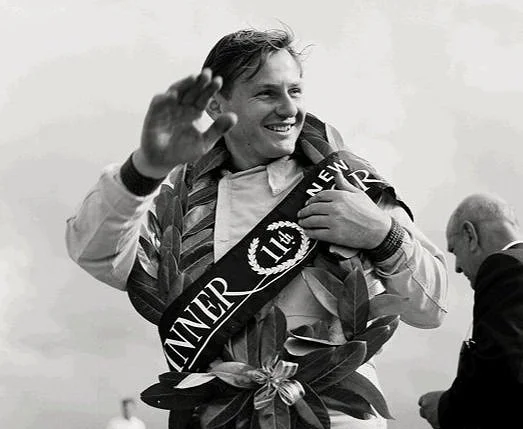Where McLaren’s Story Began
October 8, 2025 | 8 min read
The story of McLaren is, at its core, the story of one man —
Bruce McLaren.
A visionary engineer, a fearless racer, and an innovator decades ahead of his time. Born in Auckland, New
Zealand, in 1937, Bruce’s fascination with machines began early. His father owned a small service station and
workshop, where young Bruce spent countless hours observing, learning, and eventually building. His passion
for understanding how things worked would soon evolve into a drive to push the limits of what was possible.
In 1958, his talent caught the eye of Jack Brabham, who helped him join the Cooper racing team in the United
Kingdom. At only 22 years old,
Bruce won the 1959 United States Grand Prix
, becoming the youngest driver at the time to win a Formula 1 race. Yet, while his career as a driver was on a
steep rise, his true genius shone through in what he built, not just how he drove.
In 1963, Bruce founded Bruce McLaren Motor Racing Ltd. in a modest workshop in New Malden, Surrey. His goal wasn’t simply to race — it was to create cars that embodied both speed and technical excellence. With a small but dedicated team, McLaren began producing innovative machines that would soon dominate the racing world. The McLaren M6A , introduced in 1967 for the Can-Am series, marked the company’s first true triumph. Its lightweight design, precision handling, and raw power helped the team claim five consecutive championships between 1967 and 1971. Bruce’s philosophy was simple: every race was an opportunity to learn, to improve, and to innovate.
Bruce McLaren’s approach went beyond competition. He believed that racing was a test bed for ideas that could
shape the future of performance vehicles. Every car, every innovation carried his imprint:
purpose-driven engineering guided by passion.
By the late 1960s, McLaren had established itself not only in Can-Am but also in Formula 1 and IndyCar, laying
the foundation for a multi-disciplinary motorsport powerhouse. Bruce was no longer just a racer or designer —
he had become a pioneer whose influence would ripple through generations of engineers and drivers.
On June 2, 1970, tragedy struck when Bruce McLaren was killed while testing the M8D at Goodwood Circuit. He
was only 32 years old. The motorsport world was shaken, but his team, inspired by his vision, refused to let
his dream fade. Under the leadership of Teddy Mayer and later Ron Dennis, McLaren continued to grow,
becoming one of Formula 1’s most successful and enduring teams.
Bruce’s values — innovation, resilience, and the pursuit of excellence — became the guiding principles of the
brand. Every McLaren car, from the championship-winning MP4/4 to the road-going F1, P1, and Artura, carries
echoes of his spirit. His legacy lives not only in the cars that bear his name but in the philosophy that
drives them: the belief that limits exist only to be surpassed.
Today, McLaren stands as one of the most respected names in motorsport and automotive engineering. The company’s
dedication to technology, design, and performance remains rooted in the ideals Bruce set more than six decades ago.
Each innovation — from hybrid powertrains to carbon-fiber monocoques — reflects his commitment to fusing art and science in motion.
And so, the story of McLaren is not merely about victories or machines. It’s about the enduring
legacy of a young man from New Zealand who dared to dream — and built a future that still moves us today.

Bruce McLaren
McLaren Founder
"To do something well is so worthwhile that to die trying to do it better cannot be foolhardy. It would be a waste of life to do nothing with one's ability, for I feel that life is measured in achievement, not in years alone."
POLICIES & TERMS
Cookie Policy
Privacy Policy
Terms and Conditions
Legal Notice
McLaren